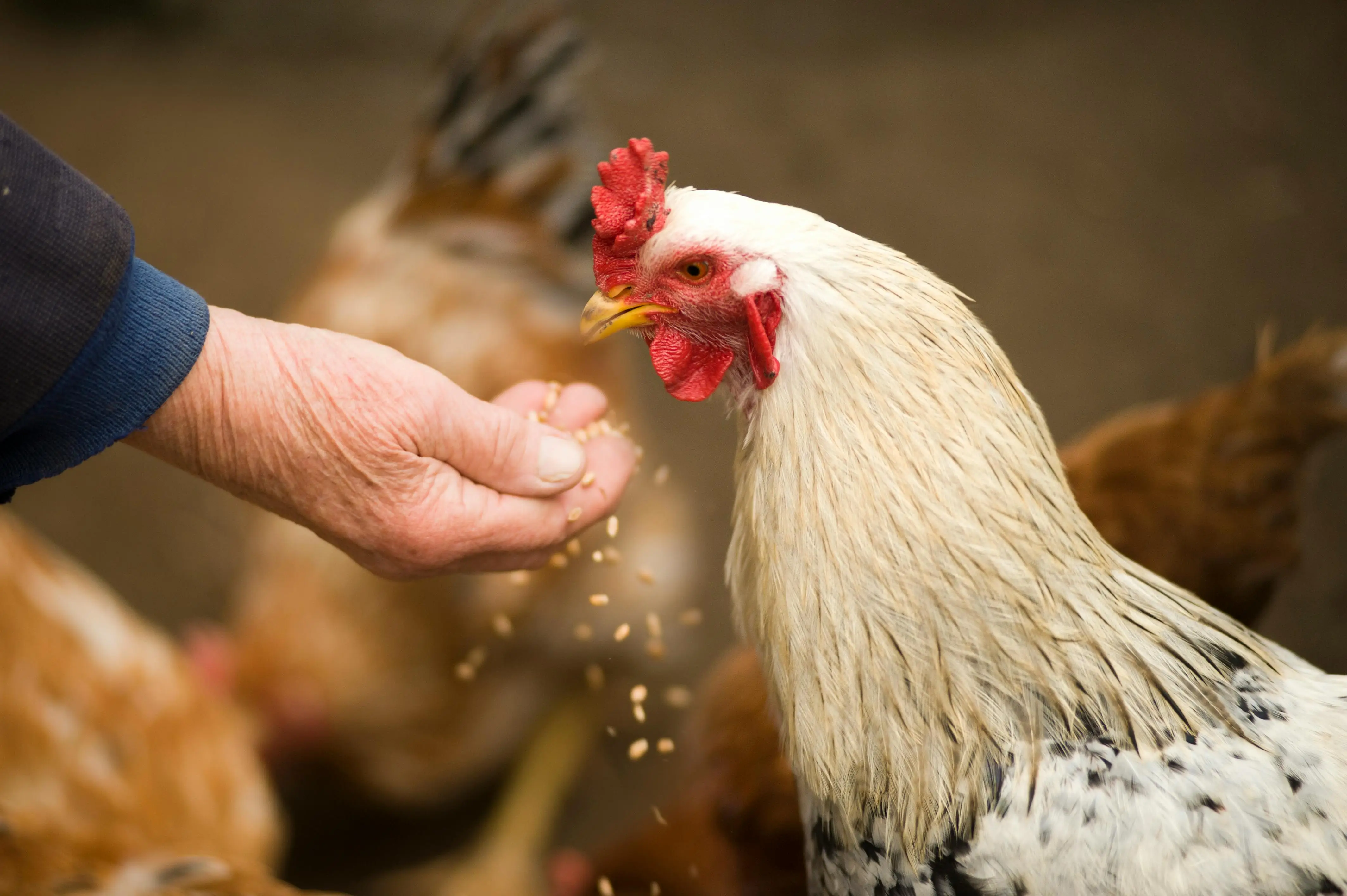Table of Contents
Table of Contents
Seeing patches of bare skin or a flurry of feathers in your chicken run can be downright alarming! Chicken feather loss is a common concern for backyard flock owners, but it's rarely a mystery without a solution. Understanding the reasons chickens lose feathers is the crucial first step to restoring your flock's plumage and peace of mind. Whether it's a natural process or a sign of trouble, we'll uncover the causes of feather loss in chickens and provide actionable solutions for feather loss to get your hens (and roosters!) looking and feeling their best again.
1. The Natural Shed: Molting
- Cause: This is the #1 reason for chickens losing feathers! Molting is a completely natural, annual process, usually triggered by shorter daylight hours in fall. Chickens shed old, worn feathers to make way for new, strong plumage and rejuvenate their reproductive systems. Expect loss primarily from the head, neck, back, and tail.
- Signs: Gradual feather loss, new "pin feathers" (look like quills) emerging, possible drop in egg production, temporary grumpiness.
- Solution: Patience and support! Increase protein in their diet (18-22%) to fuel feather regrowth (look for feeds specifically formulated for molting or supplement with mealworms, fish meal). Ensure minimal stress and provide clean water. No need for panic – it's nature's renewal program!
2. Feathers as Fashion Victims: Feather Pecking & Cannibalism
- Cause: This destructive behavior is a major concern. It starts from curiosity, boredom, overcrowding, nutritional deficiencies (especially protein, methionine, salt), or bright light exposing skin/blood. Once a peck draws blood, it can escalate rapidly as chickens are attracted to red.
- Signs: Feathers missing primarily on the back, wings, tail, or vent area. Obvious signs of pecking wounds, bleeding, or scared, picked-on birds.
- Solution: Act FAST! Identify and isolate injured birds immediately. Address the root cause:
- Reduce Overcrowding: Provide ample coop and run space (at least 4 sq ft inside, 10 sq ft outside per bird).
- Enrichment: Add perches, dust baths, hanging treats (like cabbages), and areas to forage to combat boredom.
- Nutrition: Ensure a complete, balanced layer feed (16-18% protein minimum). Consider a higher-protein supplement during times of stress.
- Light: Avoid overly bright coop lighting; use soft, diffused light if needed in winter.
- Anti-Pecking Sprays: Bitter-tasting sprays applied to feathers can deter pecking.
- Pinless Peepers: These blinders can be effective in severe cases by limiting direct pecking vision.
3. Tiny Terrors: External Parasites (Mites & Lice)
- Cause: Northern fowl mites and poultry lice live on birds, feeding on blood and skin debris. Their biting and irritation cause intense itching, leading chickens to scratch and over-preen, damaging feathers.
- Signs: Feathers look chewed or broken near the base (especially around the vent), restlessness, pale combs (anemia), visible mites (tiny red/brown specks) or lice eggs (nits) clinging to feather shafts near the skin.
- Solution: Thorough coop and bird treatment is essential:
- Treat Birds: Use approved poultry dusts, sprays, or topical solutions (like Ivermectin under vet guidance). Apply directly to the skin under feathers.
- Clean Coop: Remove all bedding. Scrub EVERY surface (roosts, walls, nest boxes) with a strong detergent or coop cleaner. Apply poultry-safe insecticide dust or diatomaceous earth (food grade) to cracks and crevices. Repeat treatment as directed.
4. Stress: The Silent Feather Thief
- Cause: Chickens are creatures of habit. Stress in chickens from predators (even near-misses), loud noises, introducing new flock members, moving coops, illness, or bullying can trigger feather loss. Stress hormones can interrupt normal feather growth cycles.
- Signs: Generalized feather loss or poor feather condition, alongside behavioral changes like hiding, reduced activity, or decreased appetite.
- Solution: Identify and minimize stressors. Provide secure housing, consistent routines, quiet environments, and plenty of hiding spots. Ensure your flock hierarchy is stable. Address bullying promptly. Consider stress-relief supplements like electrolytes or herbs if appropriate.
5. When Nutrition Falls Short
- Cause: Feathers are made almost entirely of protein. A diet chronically deficient in protein, essential amino acids (like methionine and lysine), vitamins (A, B complex, D, E), or minerals (sulfur, zinc) can lead to poor feather growth, brittle feathers, and delayed molting recovery.
- Signs: Dull, brittle, or slow-growing feathers, general poor condition, potentially alongside reduced egg production.
- Solution: Feed a high-quality, nutritionally complete commercial layer feed appropriate for their age and life stage. Avoid diluting it with too many low-protein scraps or grains. Supplement strategically during molting or high stress with protein-rich treats like mealworms, sunflower seeds (in moderation), or fish meal.
6. The Broody Hen Blues
- Cause: A hen determined to hatch eggs will pluck feathers from her own breast to create a warm, bare "brood patch" for direct skin-to-egg contact.
- Signs: A very determined hen sitting constantly in a nest box, with a large, red, featherless patch on her lower breast and belly.
- Solution: This is natural behavior. If you don't want her to hatch eggs, you'll need to "break" her broodiness (frequent removal from the nest, cooler environment). The feathers will regrow once she stops being broody.
7. Rooster Romancing (Over-Mating)
- Cause: An over-enthusiastic rooster or too few hens for one rooster can lead to excessive treading. His claws and spurs can damage feathers on the hens' backs and wings, and his beak may grip neck feathers.
- Signs: Missing or broken feathers specifically on a hen's back, wings, and sometimes neck. Bare skin, possibly even scratches.
- Solution: Increase the hen-to-rooster ratio (10 hens per rooster is a good minimum). Consider using "Hen Saddles" (aprons) to protect the hens' backs. In persistent cases, rehoming the rooster may be necessary.
Getting Your Flock Fully Feathered Again
Chicken feather loss can stem from simple molting to more complex issues like pecking or parasites. By carefully observing where the loss is occurring, how it looks (broken shafts? bare skin?), and your birds' overall behavior, you can usually pinpoint the cause of feather loss in your chickens.
Most causes have clear solutions for feather loss: adjusting feed, managing parasites, reducing stress, or modifying the flock environment. Providing excellent nutrition, a clean and spacious coop, and plenty of enrichment goes a long way in preventing many feather problems. If you suspect parasites, illness, or the feather loss is severe and unexplained, consulting an avian veterinarian is always the best course of action.
With attentive care and these solutions, your chickens will be strutting their stuff with a beautiful, full set of feathers in no time! For more expert poultry care tips and quality supplies, explore Telavets.com – your partner in happy, healthy backyard flocks.

